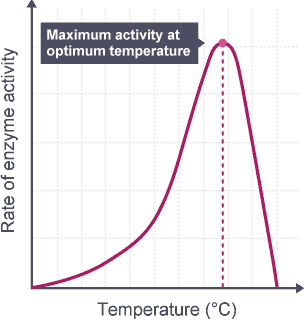The yeast in bread dough feeds on sugar to produce carbon dioxide. Why does the dough rise faster in a warmer area?
1 Answer
The dough rises faster in a warmer area because the rate of a chemical reaction increases as the temperature increases.
Explanation:
The production of carbon dioxide from sugar is a chemical reaction.
The reaction goes faster at warmer temperatures because more molecules have enough energy to react.
The difference is that in bread dough the reaction is controlled by enzymes (organic catalysts) in the yeast.
The reaction speeds up until an optimum (best) temperature is reached.

(From www.bbc.co.uk)
At higher temperatures, the enzymes lose their activity and are eventually destroyed (denatured) by the heat.
The optimum fermentation temperature for bread dough is about 35 °C.
When the temperature exceeds 38 °C, the rate starts to decline, and by 41 °C the enzyme is almost completely denatured.

